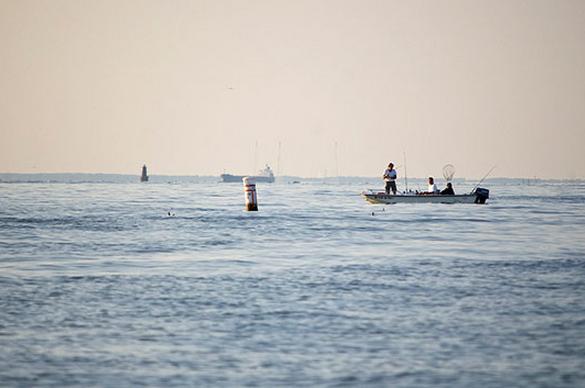The Bay region is lagging behind its nitrogen and sediment reduction goals aimed at restoring Chesapeake water quality, though phosphorus control efforts appear to be ahead of schedule — at least on paper — according to recently released figures.
The data, released by the state-federal Bay Program partnership, provided updated estimates of state nutrient and sediment reduction efforts through 2014. Those efforts are aimed at clearing the Chesapeake’s often murky waters and eliminating its summertime oxygen-starved “dead zone.”
The annual update shows progress in reducing the three targeted pollutants — nitrogen, phosphorus and sediment — over the last five years. But nitrogen and sediment reductions are far off the pace needed to achieve the goals set for 2017 and 2025.
Phosphorus reductions appeared to be ahead of schedule, but officials cautioned against reading too much into the reported numbers, citing other evidence that suggests the phosphorus estimates may be optimistic. Actual water quality monitoring shows phosphorus concentrations are increasing in most Bay tributaries.
“Monitoring data show that we still have work to do to lessen the quantities of nutrients in Bay tributaries, particularly with respect to phosphorus levels,” said Joel Blomquist, a hydrologist with the U.S. Geological Survey.
The more daunting challenge, though, may be nitrogen. That shortfall is so great that the region in the next three years would have to achieve nearly two-and-a-half times the nitrogen reductions accomplished during the last five to meet targets set for 2017.
Most of the nitrogen shortfall comes from Pennsylvania, where data suggests nitrogen from agriculture — by far the largest source of the nutrient — has increased since 2009, the baseline for measuring progress toward meeting the Chesapeake Bay Total Maximum Daily Load.
The TMDL was established by the Environmental Protection Agency in 2010 and sets limits on the amount of nitrogen, phosphorus and sediment that can enter Bay waters. States are to achieve the goals by 2025, with 60 percent of the reductions to be accomplished by 2017.
Each year, all jurisdictions in the watershed — Virginia, West Virginia, Delaware, the District of Columbia, Maryland, Pennsylvania and New York — report what actions they took to reduce pollution to streams. That, along with other data, is run through a computer model to estimate the amount of nitrogen, phosphorus and sediment that reaches the Bay.
The 2014 estimates were:
• For nitrogen — the 2009 baseline was 260.2 million pounds. The estimated 2014 progress was 248.5 million pounds. (The 2017 target is 219.5 million pounds and the 2025 goal is 192.4 million pounds.)
• For phosphorus — the 2009 baseline was 19.23 million pounds. The 2014 progress was 15.82 million pounds. (The 2017 target is 16.37 million pounds and the 2025 goal is 14.46 million pounds.)
• For sediment — the 2009 baseline was 8.68 billion pounds. The 2014 estimated progress was 8.35 billion pounds. (The 2017 target was 7.87 billion pounds and the 2025 goal is 7.34 billion pounds.)
The figures show that all jurisdictions have already achieved the 2017 phosphorus goals.
But much of that improvement stemmed from the inclusion of data released last year from the U.S. Department of Agriculture’s 2012 agricultural census. That census, completed every five years, showed fewer chickens being grown in the watershed than previously estimated. That resulted in an estimated reduction in the estimated amount of phosphorus-rich chicken manure produced.
But officials cautioned that the Bay Program is reviewing how it estimates the amount of phosphorus reaching the Bay. Other data show that chickens, on average, may be growing larger and producing more waste than assumed by the model. Also, the phosphorus estimates don’t take into account that some areas with intensive animal agriculture, such as Maryland’s Eastern Shore, have soils that are so saturated with the nutrient that they would continue to leak phosphorus into waterways even if no more was applied to the land.
Katherine Antos, of the EPA, who leads the Bay Program’s Integration and Evaluation Team, said it is likely that review — expected to be completed in 2017 — “will show that additional actions will be necessary to manage phosphorus pollution entering the Bay. So the bottom line is that while the…pollution indicator shows that phosphorus reductions are ahead of schedule, federal state and local partners must not back off from commitments to manage phosphorus.”
For nitrogen, the data show the vast majority of reductions came from wastewater treatment plants, which are nearing their 2025 goals. But all states are losing ground relative to the 2009 baseline when it comes to controlling urban runoff, and all jurisdictions except Maryland, West Virginia and the District of Columbia saw their nitrogen loads from septic systems increase.
Part of the nitrogen shortfall was attributed to updated data, primarily information showing more acres of cropland — which is prone to nitrogen runoff — in the watershed than was previously estimated.
The biggest nitrogen shortfall came from Pennsylvania’s agricultural sector, where nitrogen runoff from farms increased 2.5 million pounds since 2009, according to model estimates. Pennsylvania’s farms would need to achieve an 18.7 million pound reduction to achieve its 2017 goal — almost twice the reductions needed from the entire rest of the watershed during the next three years, the data show.
Last year, the EPA announced it was stepping up oversight Pennsylvania’s agricultural sector because of its lack of progress.
Antos said the EPA would work with the states “to figure out how we can still meet our nitrogen and sediment reduction goals and get those pollutants back on track toward where they need to be by 2025.”
The EPA, which is responsible for enforcing the TMDL, is scheduled to release a separate assessment of each individual state’s cleanup efforts in late May.
By Karl Blankenship
..



Write a Letter to the Editor on this Article
We encourage readers to offer their point of view on this article by submitting the following form. Editing is sometimes necessary and is done at the discretion of the editorial staff.